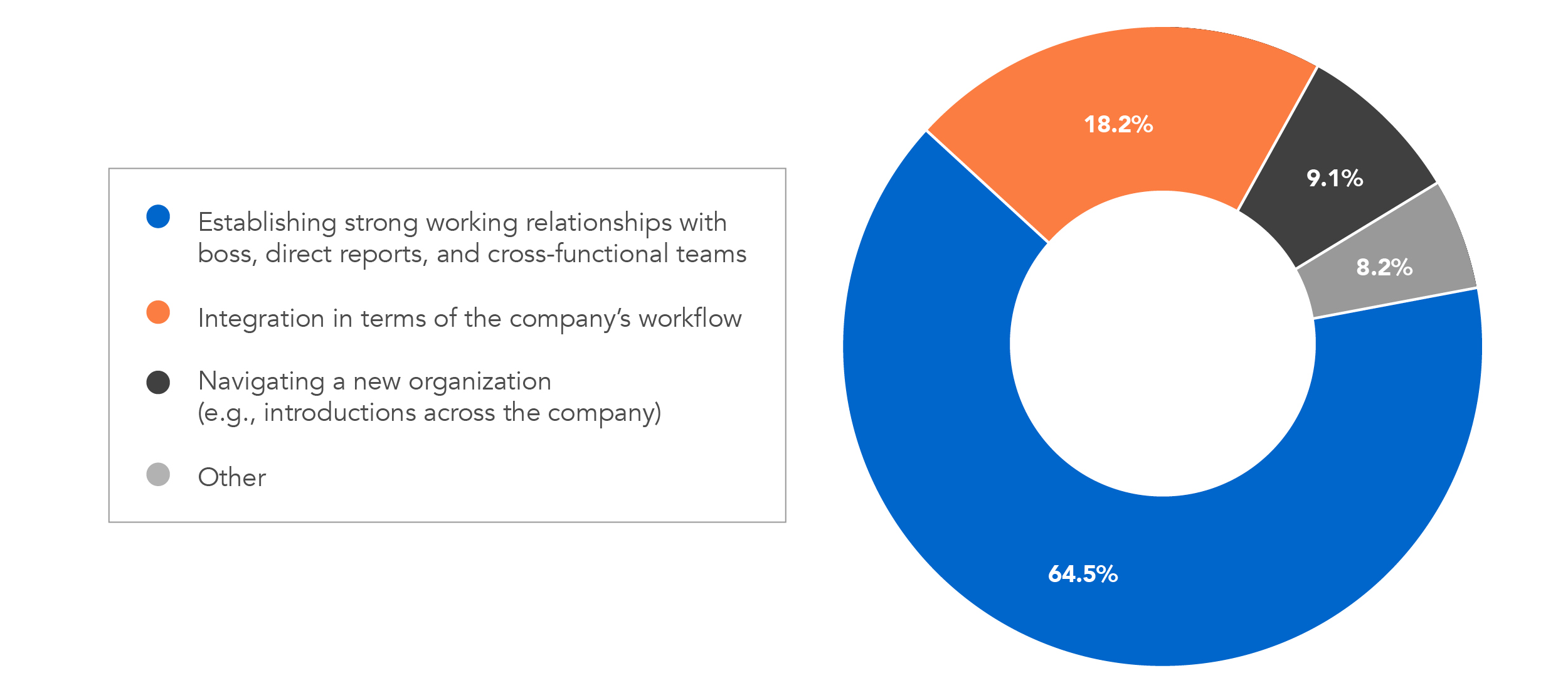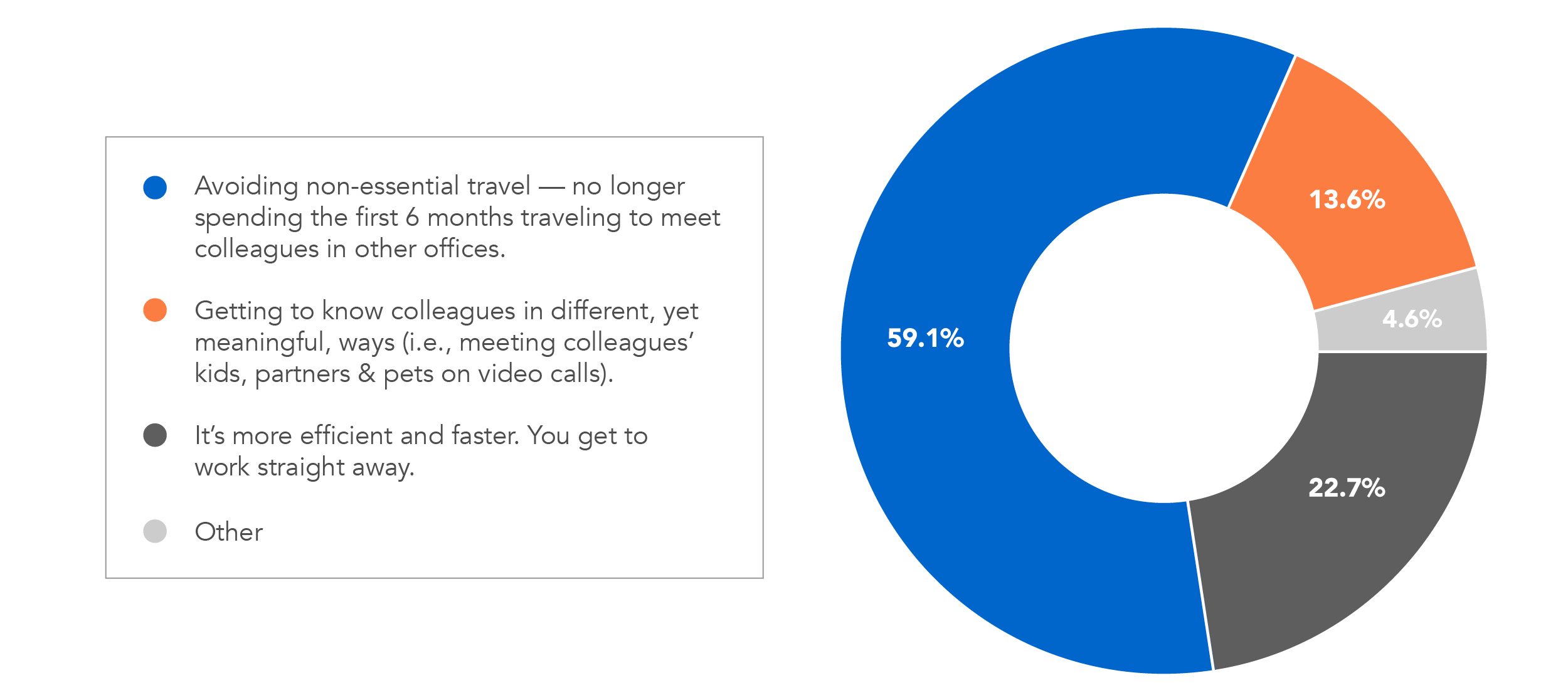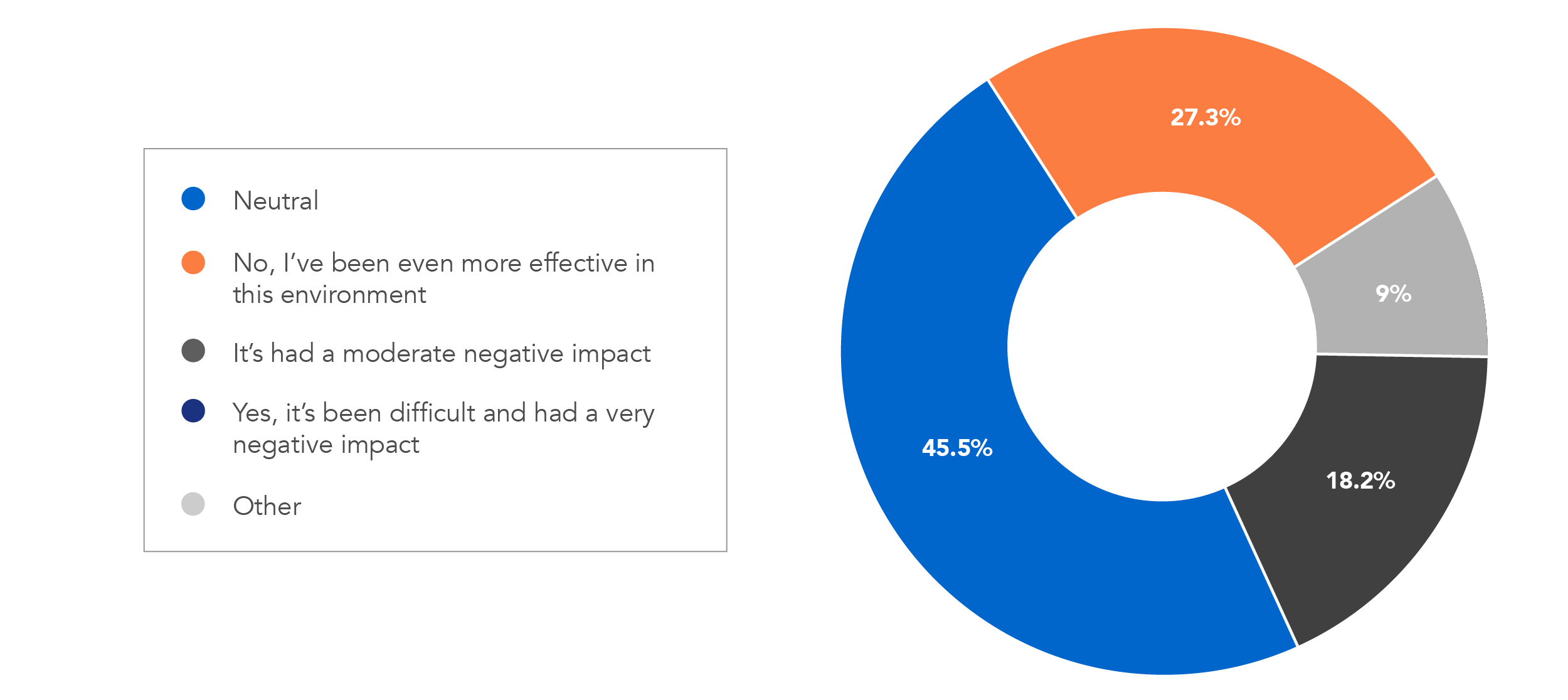INTRODUCTION
There’s no question that joining a new company and going through the onboarding process at a time when everything and everyone is “virtual” is a wildly unique experience—one that most of us are not accustomed to…yet. In the scheme of things, evolving best search practices to run an effective virtual hiring process for senior executives is perhaps the easier part. The more challenging piece to solve for is—how the heck do we get this individual successfully launched and integrated in their new company outside of a traditional office setting?!
SPMB anonymously surveyed our over 100 placements since the start of the pandemic and office shutdowns to determine—how’s the virtual onboarding process going? And are there any valuable learnings that can be shared with others embarking on this process? We’ve aggregated the survey results below. Our goal is to better equip hiring companies and executive candidates with insights—both best practices and potential pitfalls—to help the market continuously improve the virtual onboarding experience, which remains new (yet critical) territory for all of us.
SURVEY RESULTS
Survey Respondents’ Demographics
- 55% = respondents at companies with 1,000 employees or less
- 45% = respondents at companies with 1,000 employees or more
○ 20% with over 10,000 employees
- Despite the range in company size, there were no significant onboarding themes that emerged based on respondents’ company size.
1) How would you describe your virtual onboarding experience?

2) What’s the most challenging part of virtual onboarding?

3) What’s been the greatest benefit of virtual onboarding?

4) Has joining a company ‘virtually’ diminished your ability to be an effective contributor?

To note, questions 5-7 are direct quotes from survey respondents
5) Can you share any best practices that were particularly effective in your own onboarding experience?
- Regularly scheduled video one-on-ones with key people. Also, take the initiative to set up meetings with individuals across the company that you wouldn’t normally interact with otherwise.
- Mixing in business meetings alongside traditional onboarding sessions (e.g. benefits), versus having a full day dedicated to onboarding.
- Having a laptop and systems access sorted prior to Day 1 was critical in terms of joining virtual sessions, accessing the necessary systems, and getting started straight away.
- To connect with individuals across the company and learn more about the existing organizational and business challenges, I hosted midday coffee/tea breaks with randomly selected team members. This allowed me to casually connect with the team and get a sense for what was working and what needed to be fixed.
- Take a lead facilitative role in the company ‘all hands’ meeting to be seen as a visible leader early on.
- I initially felt isolated so I scheduled time with executives to connect personally and professionally. I found that there’s commonality and shared experience among all of us adjusting to working in a virtual environment—this helped to ‘break the ice’.
- ‘Skip-level meetings’ are more helpful than ever before in this virtual-first world.
- Establish some key documented baselines in terms of org, processes, plans, budget, goals, etc.
- Get a big, big project on day 1, and get your hands dirty!
- My company has an existing and extensive in-person onboarding process that they made virtual. It is everyone’s top priority, so it forced all of the new hires to dedicate a full two weeks to onboarding, versus diving into work right away.
- Making the time to get to know new colleagues more informally (not just professionally). This is such a critical component for building successful, lasting relationships.
- My team held an offsite outdoors, adhering to social distancing guidelines, which was effective.
- Overcommunication is key!
- I took 3 weeks off before starting to mentally prepare myself.
- I hired a teammate from my past employer to start with me; this was helpful from a continuity and support perspective.
- I developed and maintained a well-prepared checklist and reading list to work through during the onboarding process.
6) Were there any pitfalls from your own onboarding experience?
- Not being able to build deeper in-person relationships—with clients or colleagues.
- Not being in the office meant you couldn’t rely on your office/cube neighbor for questions when trying to navigate systems, so it required emails/calls to teams versus an impromptu conversation.
- Not having quiet time between Zoom meetings to reflect, plan, and take a breather.
- Getting my infrastructure set up (IT, Benefits, etc.) — it was much more challenging remotely.
- Not being able to see in-person mannerisms of team members.
- Too many consecutive meetings the first three weeks and little work as a result.
- Just so much time on Zoom calls. And I went through the onboarding process earlier in the pandemic, so I was not yet used to being on video calls all day long. Very tiring.
- Few opportunities to brainstorm in an unstructured setting.
7) What are your top tips for a new executive hire during the onboarding process?
- Get a regular cadence in place with everyone who is key to your success.
- Be patient. You are going to be a guinea pig so don’t expect things to move/operate flawlessly.
- Be patient as I think the process of integration takes longer virtually. Oftentimes organizations create onboarding plans. However, I’d recommend that the new executive take greater ownership of the process to ensure that she/he is doing the things that are necessary for their success.
- Find ways to get visible—for instance, on Slack, at all-hands meetings, or during virtual social events.
- Try to get someone to put together a step-by-step “here’s what you need to do to get everything sorted out” document, with links.
- Plan ahead for what you need to succeed and embrace the virtual environment. There are, in fact, many positives to the virtual world.
- Get to know your team, down to the front-line individual contributor level.
- Lean in!
- Meet, plan, execute; meet, plan, execute — not meet, meet, meet…it’ll help you build relationships and contribute at the same time.
- Make video mandatory for all virtual meetings. It is much more effective, and soon enough, you start to read other participants’ body language.
- Get to know the team you’ll be working with quickly. That way you mitigate “stepping on toes”.
- Focus on gaining trust by getting things done ASAP.
- Take advantage of being new. Ask a lot of questions, find out who is great at navigating the organization, and spend lots of time with that person learning about any pitfalls you should be aware of. Also, spend extra time with leadership getting to know them and what their vision is.
- This is a new landscape for everyone, so hang in, be patient, and experiment with different processes and tools for getting acclimated to your new organization/colleagues/workflow.
- Relentlessly prioritize and communicate often!
- If you’re hired as an executive, that likely means that the current leadership team is looking to you to help shape virtual onboarding best practices (and really all virtual experiences/processes). This is a new process for most — everything is up for adjustment, so optimization ideas are likely very welcome.
- 1) Have your technology ready. 2) Have a senior liaison to make lots of internal introductions. 3) Think of it as the first 10 weeks; pace well.
CONCLUSION
While there’s no silver bullet solution to facilitating a successful onboarding experience—virtual or otherwise—it’s important to take stock of where we are (and how we’re doing) today to help us determine the ways in which we can improve in the future.
One thing that remains certain in an otherwise uncertain time is that well-positioned businesses continue to grow, and thereby, look to hire exceptional leaders as they drive their organizations forward. With that in mind, executives and companies alike should remain focused on and invested in continuously refining and improving the virtual onboarding process—this is true across industry, growth stage, and company size—in order to activate, empower, and retain top talent.
If SPMB can be a conduit for bringing these insights and best practices together to the broader market, we’re fortunate and pleased to do so. And if we can be helpful to you or your organization as we all continue to navigate 2020 and beyond, please get in touch!


